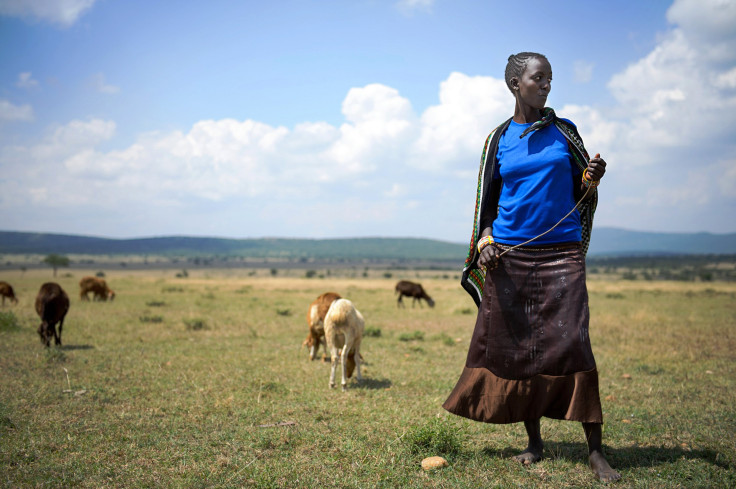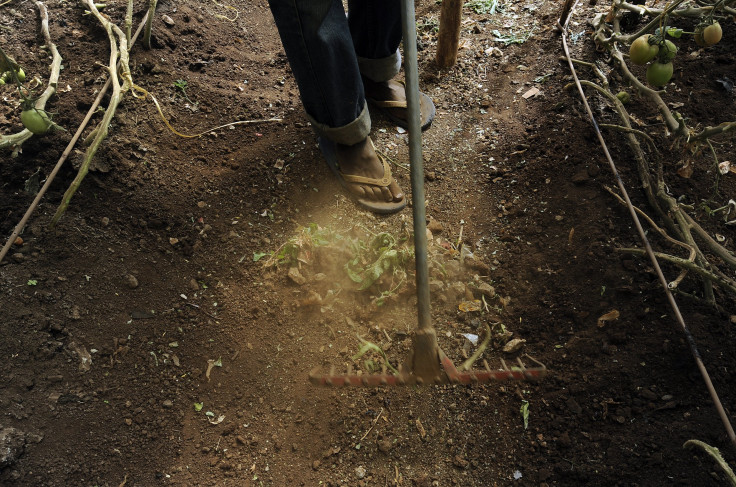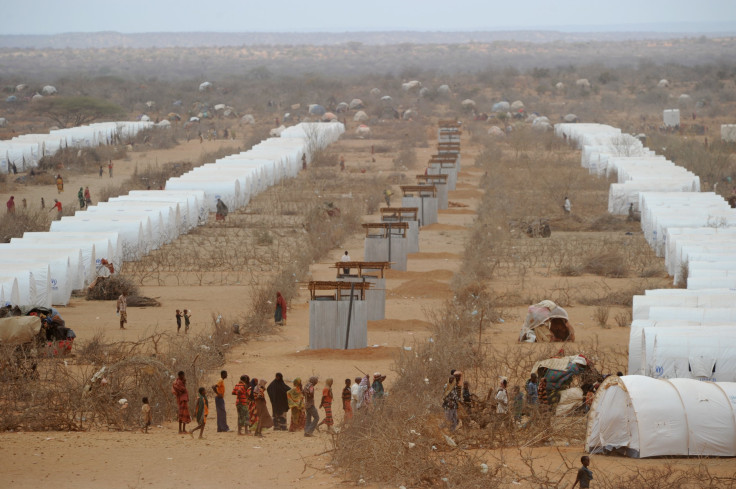El Niño In Africa 2015: Weather Phenomenon May Devastate East African Farmers, Herders With Drought, Floods

A potentially record-breaking El Niño brewing in the tropical Pacific Ocean will soon hit the eastern shores of sub-Saharan Africa. But African leaders said they aren't sure how to prepare. The weather phenomenon has increased in variability in recent years, making it difficult to predict its devastating impact. The climate system's abundant rainfall may bring much-needed relief to some farmers and herders in East Africa who have suffered from drought this year. But excess rain also could trigger devastating floods in the Horn of Africa region.
Previous El Niño events have devastated crop yields and killed livestock, forcing some farmers and herders to leave their families behind in search of a more reliable income, experts and meteorologists said. The weather crisis has seen food shortages and soaring food prices across the Horn of Africa, which forced food out of reach for many and pushed poor households into poverty. Staple prices were at 68 percent over the five-year average in July 2011, including increases of up to 240 percent in southern Somalia, 117 percent in southeastern Ethiopia and 58 percent in northern Kenya, according to figures from the United Nations.
“The storms are changing,” said Jennifer Olson, an associate professor at Michigan State University who researches the impact of climate change on agricultural communities in Africa. “In some years, it looks like El Niño is leading to above-average rainfall in some places and, in other places not too far away, leading to more drought. That kind of dichotomy is getting even more exacerbated in the future.”
Weather agencies worldwide have said the evolving El Niño, a warming of the equatorial Pacific Ocean, may turn this year into the strongest on record. Local governments in East Africa were urged in August to prepare for the coming storms. Communities arranged provisions of food, shelter and medicine for flood-related illnesses.

Kenya’s meteorological department warned that parts of the East African country may see above-average rainfall from El Niño during the October-to-December rainy season, which could be detrimental for flood-prone areas and coastal lowlands but could help parched farmland and pastoral communities to the west.
“We might start seeing rainfall after fairly dry conditions in western Kenya,” said Peter Ambenje, deputy director of the Kenya Meteorological Department. “Crop production does very well with enhanced rainfall, but too much can be a problem in some cases.”
Coffee-industry officials in Kenya and Uganda said the storms may affect coffee output this year. Excess rain could cause crop funguses such as coffee berry disease, while farmers may struggle to maintain weeding and pruning. Heavy rains also may bring destructive landslides.
“There is concern because flowering could be destroyed,” Grenville Kiplimo Melli, the interim head of Kenya’s Coffee Directorate, told Bloomberg. “The rains would also result in diseases for the crop.”
East Africans already have suffered this year from torrential rains and drought, which experts said could be linked to the evolving El Niño. Life in Nairobi came to a standstill in May after heavy downpours caused mass flooding in Kenya's bustling capital. The streets, which lack efficient drainage networks, became rivers that swallowed residents, cars and buildings. Meanwhile, floods in northwestern Tanzania killed dozens and left hundreds homeless. The severe weather also killed livestock and destroyed crops of maize and cotton.

The waxing and waning of rainfall across sub-Saharan Africa in recent years has been attributed to both El Niño and La Niña, the cooler counterpart of El Niño that produces opposite climate variations as part of the broader El Niño-Southern Oscillation.
The weather phenomena and their impact are becoming harder to predict. A 2013 analysis of climate records chronicled within ancient corals revealed the magnitude and frequency of El Niño events were more variable during the 20th century than, on average, the preceding 7,000 years. A 2014 study in the journal Nature Climate Change said the infamous climate pattern could double in frequency in coming decades because of global warming.
“It used to be that in Africa, El Niño was associated with the above-average rainfall, flooding and landslides, and then that would be followed by drought or vice versa. But now, it’s really unpredictable,” Michigan State's Olson said. “It looks like it’s two different events that are happening, but it’s really due to the same thing, which is a lot more heat and energy in the atmosphere and a lot more extremes.”
The El Niño of 1997-1998 was the worst in modern records. It left swaths of southern Somalia underwater and killed 2,000 people. It also triggered widespread animal disease outbreaks, which led to a long-lasting ban on livestock exports.
Some rural communities on the continent are still recovering from previous systems. A La Niña-linked drought plagued the entire East Africa region from 2011 to mid-2012 and led to dire food insecurity, which threatened the livelihood of 9.5 million people. An estimated 260,000 people, half of them children, died from famine in Somalia, which was one of the worst-affected areas. As a result, tens of thousands of Somalis fled to overcrowded camps in Kenya, the United Nations said.
Somalis have made some progress on food security, but over 65 percent of the population depends on livestock and more than 731,000 people are estimated to be severely food insecure, according to the Food and Agriculture Organization of the United Nations.
Meanwhile, droughts in northern Tanzania, southern Kenya and across north-central and eastern Ethiopia this year have led to livestock deaths. Excess rains and dry conditions from the coming El Niño would exacerbate ground conditions in these areas, experts said.

Farmers and herders account for 80 percent of the population in East Africa and they are hyper-aware of climate patterns because they can dictate their income and well-being. But locals are struggling to adequately prepare for El Niño as the ocean-warming phenomenon occurs more often.
“Since El Niño is coming more frequently, the vegetation and the people don’t have time to recover between droughts. The lakes don’t fill up, there’s less surface water available, livestock are lost during the droughts and you don’t have a chance to get their numbers up,” said Olson, who recently returned from East Africa.
The weather program has torn apart impoverished families and made life difficult for pastoral communities whose livelihood depends on traditional rain-fed agriculture. When farmers and herders have failed harvests or lose cattle to floods and disease, the husbands are often forced to leave home and find work in the nearest city and send back money, experts said.
“It hits the people who are not making it very much anyway,” Olson said. “Those kinds of shocks to the system, whether it's drought or flooding, are usually just enough that people can’t recover anymore.”
© Copyright IBTimes 2024. All rights reserved.





















